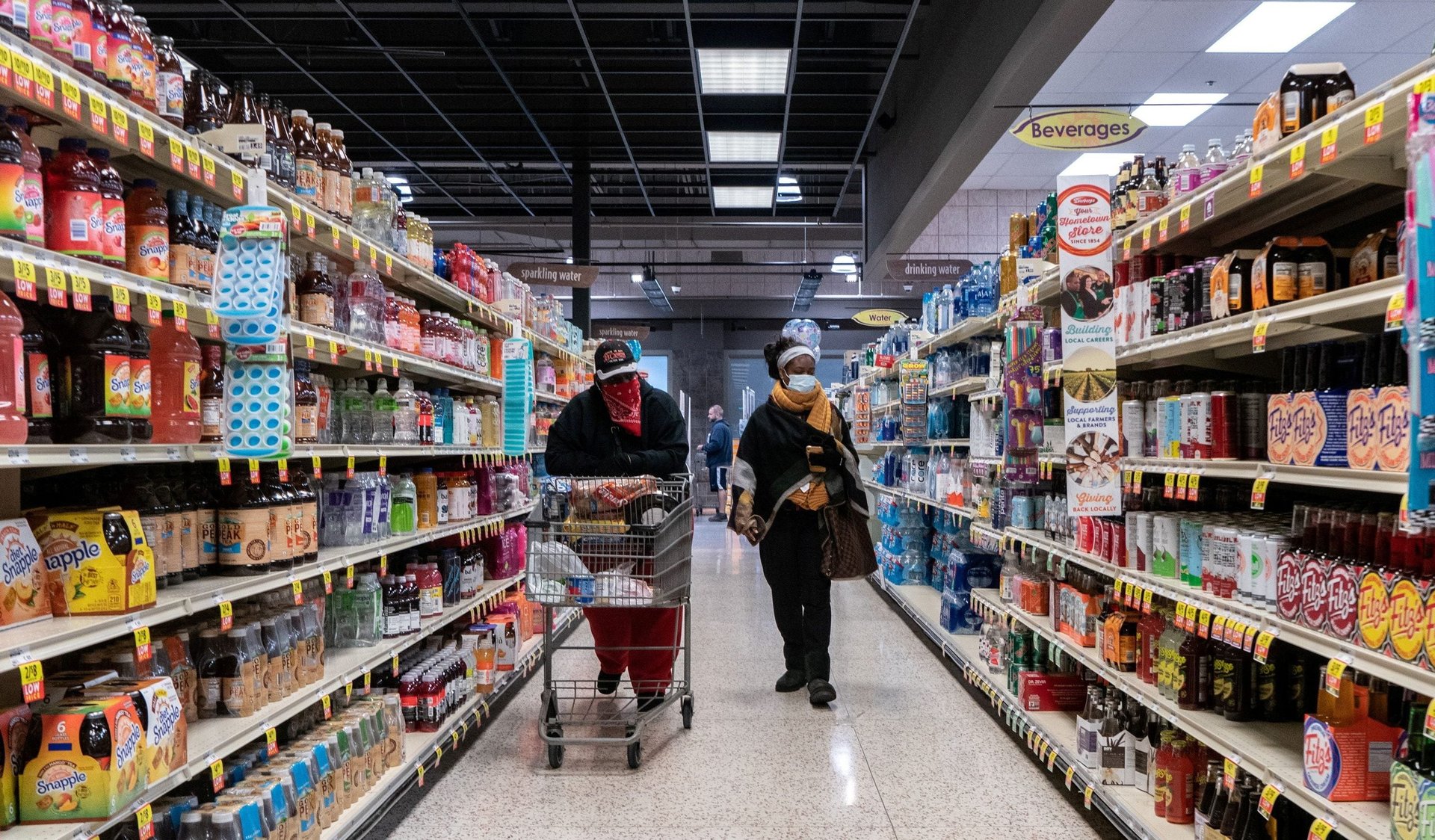US families spend far less on food than those in Europe, but for how much longer?
As the prices for food staples like milk and coffee continue to rise, Americans are spending more on their weekly grocery trips. In the US, food prices are up 4.5% from a year ago, according to the US Bureau of Labor Statistics.


As the prices for food staples like milk and coffee continue to rise, Americans are spending more on their weekly grocery trips. In the US, food prices are up 4.5% from a year ago, according to the US Bureau of Labor Statistics.
But US consumers also spend a smaller share of their budget on groceries versus those in other countries. Last year, the share of household budgets devoted to food was 7.1% in the US; it was higher in European countries like the UK (9.4%), Germany (11.7%), France (15%), Spain (15%), and Italy (16.5%), according to Euromonitor International, a London-based market research firm.
In the US, the share of disposable income spent on total food experienced a sharp decline this year in part due to the largest annual increase in disposable personal income since 2000 due to government pandemic payments, according to Michael Swanson, the chief agriculture economist at Wells Fargo.
US families should get used to higher prices, which are contributing to the higher wages of workers as well as higher costs along the supply chain, according to analysts.
US families spend a lot less on food comparatively
Part of the reason Americans spend less of their overall budget on food than Europeans is because they have a much higher per capita income, so the former spends less on food as a share of their income, says Swanson. “There is a limit on what people are going to spend on food,” he says.
The US is also home to agricultural land, and exports a surplus of grain and vegetables. For instance, half of the US’s wheat is exported, says Swanson. Living close to the source of many foods means lower prices for Americans: Someone living in the Pacific Northwest will get their apple in Washington, whereas the apple traveling to Japan will cost a lot more.
Competition in production, transportation, manufacturing, and retail drives down costs as well, says Miguel Gómez, an associate professor of applied economics and management at Cornell. The competition in the retailing and distribution side of the food system tends to be more intense than in Europe, he says.
Labor contributes to rising grocery costs
The food supply chain depends on labor, and for low-wage employers in the US, labor is in short supply.
Employers are raising wages to attract workers. For instance, the average hourly pay for US grocery employees surpassed $15 for the first time this summer. With employers paying higher wages, experts say food inflation is going to remain high. Swanson points to the trucking and warehousing industry, where workers are seeing a 6% year-over-year increase in wages. That’s higher than food inflation, which is running between 4 to 5%.
Food prices are not going to slow down in the foreseeable future, as the food system is labor-intensive and workers are becoming more expensive and harder to find, says Gómez. When he talks to growers, supermarkets, and wholesalers, he says their number one concern is not only the cost but availability of workers.
The many moving pieces to the inflation picture
But the higher costs are not just going to labor; costs are swelling up and down the supply chain. Swanson gives an example with freight. In the past, it would cost $3,000 to $4,000 to move a refrigerated truck from California to New York, now that’s $10,000, he says. In addition to labor costs rising, the higher prices are being driven by port congestions and transportation bottlenecks.
The costs have a domino effect: One of the many items more expensive for food manufacturers is packaging. It is made out of plastic and resin, which come from natural gas. And the price of natural gas has been soaring. At the same time, supply chain disruptions in part due to weather conditions, like freezing temperature in Texas as well as hurricanes, are pushing back delivery dates.
One employer told Swanson it typically orders packaging for food manufacturing for three months at a time, but because the company might not receive what it wants, it decided to order six months of packaging—adding to the backlog.
Swanson is also hearing from food manufacturers in Watsonville and Salinas, California—produce-growing regions—who tell him that they are currently passing along price increases to all major retailers, “and no one can say no,” he says.
“Once they put those increases in, they’ll be there for the foreseeable future,” he says. “So this is just the start of the point. Inflation is not anywhere near the end.”
What comes up, most comes down?
Those most affected by higher costs are people on fixed income—such as retirees or who don’t have a job—or those who rely on food and nutrition assistance programs, says Swanson.
That said, food prices will eventually decrease in the long-run, says Gómez. But there’s always uncertainty of where the future is heading, as food markets can be volatile, he adds.
Recently, there’s been more interest in businesses in all parts of the food supply chain to depend less on labor—see: robots in farm production, self-checkouts in supermarkets, or automated grocery warehouses. Many of these technologies are in early development, says Gómez, but they are gradually making the food system less dependent on labor.